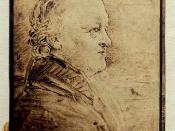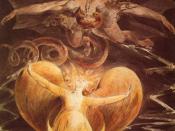The Dichotomous Duality of Divinity
How does one understand the concept of god? Classic Christian beliefs dictate to their worshippers that he loves all creatures so much that supposedly his son came to earth and died for the sins of mankind. But if he loves all of humanity, and forgives all, how can hell exist? This presentation of god as one who always forgives but always punishes creates a contradiction that forces people to examine and reexamine their understanding of the immortal force. William Blake, Christian 19th century writer dealt with this question of god through his writing. In his poems "The Lamb" and "The Tiger," Blake's speakers present a distinct duality of the human understanding of god.
Blake deliberately presents the dual natures of god through human eyes. In "The Lamb" he chose to use a child as the speaker instead of himself because it removes the speaker from a place of creation.
"The Tiger" demonstrates how people observe a supreme being in human terms. By using the words, "hammer," "furnace," and "anvil," the speaker creates images of a smith, a very human occupation of creation. The perspective of people establishes the dominant theme of humans trying to understand god. By grounding the observance of god in human terms the speaker creates two disparate perspectives of divinity: loving and mysterious, or personal and distant.
In "The Lamb," the speaker presents the nature of god as clear and simple. God "calls himself a lamb," because "He is meek and he is mild," (15). The lamb, a small, young, timid creature parallels the child in its representation of love and meekness, two common Christian values, through its creation by god. The child asks the lamb "who made thee?" and in the course of the...


